It seems we can’t find what you’re looking for. Perhaps searching can help.


Tag: build an ecommerce marketplace




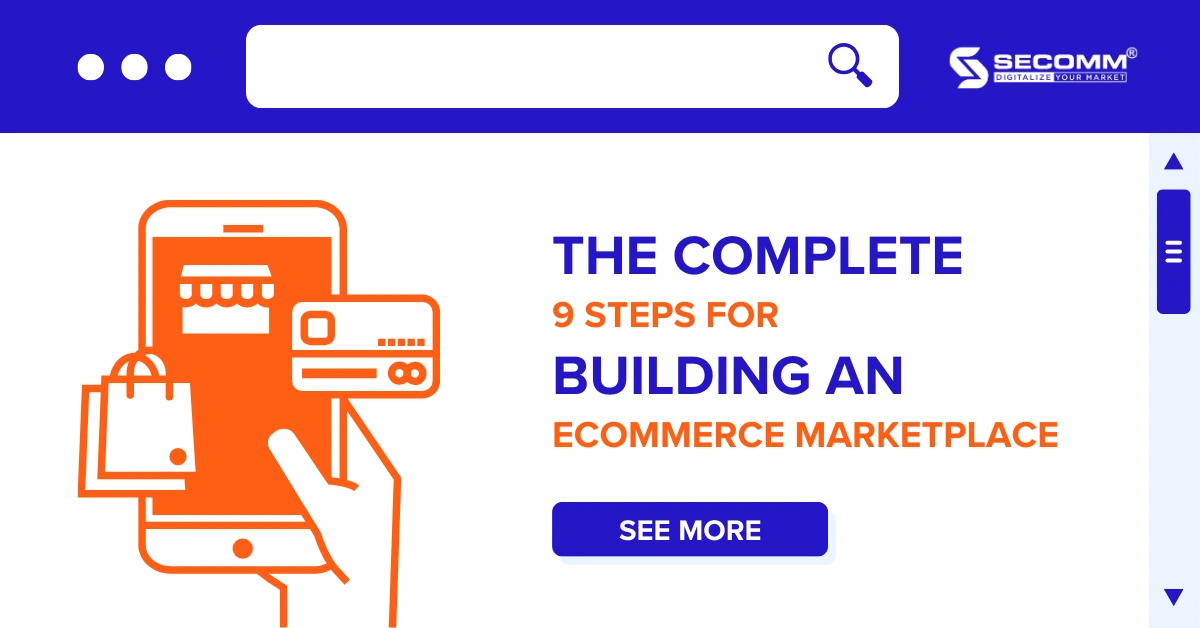
THE COMPLETE 9 STEPS FOR BUILDING AN ECOMMERCE MARKETPLACE
Unlike building eCommerce websites for simpler models like B2C or B2B, implementing an online marketplace requires a higher level of technical knowledge, programming skills, database management, system administration, and more.
In this article, SECOMM will share the essential steps for successfully developing an eCommerce marketplace, from market research and business planning to designing an appealing user interface, developing functional systems, and more.
Conduct market research and business planning
Market research and business planning are essential and indispensable initial steps in starting an eCommerce marketplace or any business operation.
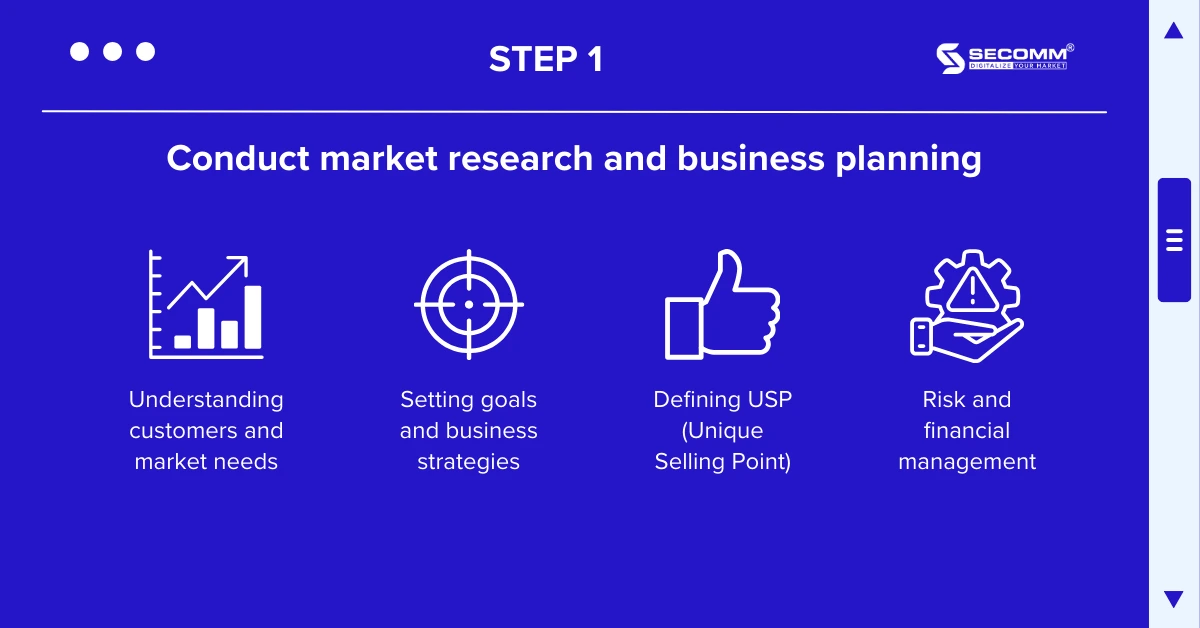
Here are some considerations for businesses when undertaking these activities:
- Understanding customers and market needs: Market research helps businesses gain a better understanding of their target customers, competitors, and industry-influencing factors. By exploring customer needs, preferences, and shopping behaviors, businesses can make strategic decisions to create the best online shopping experience and seize effective business opportunities.
- Setting goals and business strategies: Business planning helps companies identify specific objectives and devise strategies to achieve them. Companies need to define their core and secondary products/services, market access strategies, customer engagement approaches, and competitive value creation methods. A business plan helps create a detailed roadmap for how the business will build, develop, and operate its eCommerce marketplace.
- Defining USP (Unique Selling Point): Market research allows businesses to comprehend the strengths and weaknesses of their competitors. This helps businesses identify distinctive features and competitive value that their brand can provide to attract customers. Determining the USP enables businesses to leverage these elements in branding, marketing, and operational strategies to gain a competitive advantage in the eCommerce marketplace.
- Risk and financial management: Creating a financial plan and managing risks before embarking on the online marketplace development process is crucial. Businesses need to evaluate the financial resources and requirements for project implementation and establish long-term financial plans to ensure the sustainability of the business.
Select eCommerce platform
The eCommerce platform is a crucial element in the process of building an online marketplace. If the right choice is not made from the beginning, businesses may find themselves entangled in the whirlpool of technology when implementing their marketplace.
Typically, there are two types of eCommerce platforms for businesses to choose from: SaaS and Open Source.
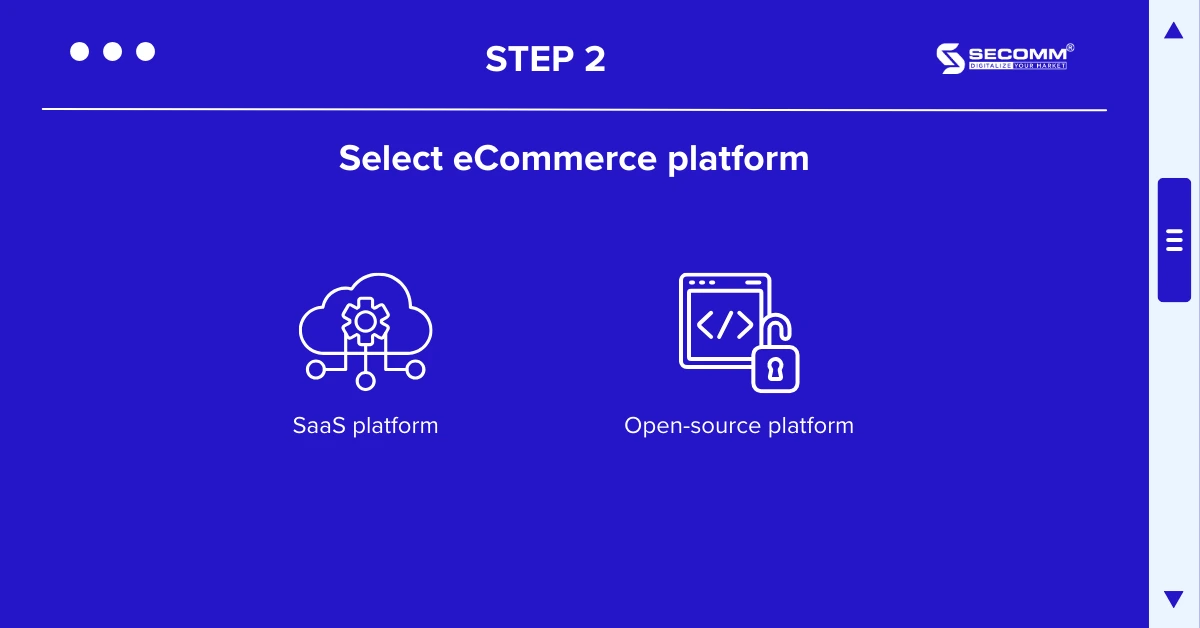
SaaS platform
SaaS (Software as a Service) eCommerce platforms are a software distribution model for building websites.
In this model, data is stored on the provider’s server, and the platform is responsible for handling technical aspects for businesses. Some popular SaaS platforms today include Haravan, Shopify, BigCommerce, and more.
- Pros: User-friendly, quick development time, high security, 24/7 customer support.
- Cons: Increasing development costs over time, limited customization, functionality, and scalability, and businesses may not own the source code and data.
Open-source platform
An Open Source platform, or open-source software, is software with publicly available source code that anyone can use for free. Open-source platforms are an optimal choice for businesses looking to develop complex eCommerce systems, especially tailored to the specific needs of an online marketplace.
Prominent examples of Open Source online marketplaces include Magento, WooCommerce (a plugin for WordPress), OpenCart, and more.
- Pros: These platforms offer high levels of customization and scalability, a wide range of additional features and utilities, and businesses have ownership of the source code and data.
- Cons: They are not very user-friendly, involve high development costs, and require extended deployment times.
Each platform type has its own set of advantages and disadvantages. Therefore, businesses should either have an in-house team or collaborate with an experienced and highly skilled eCommerce marketplace development agency to effectively advise on the selection, development, and operation of the chosen platform.
Outsource or build an in-house team
The initial decision regarding resource allocation for starting an eCommerce marketplace system has a profound impact on a company’s early business direction. Companies can choose to either collaborate with specialised development firms or establish their own in-house teams.
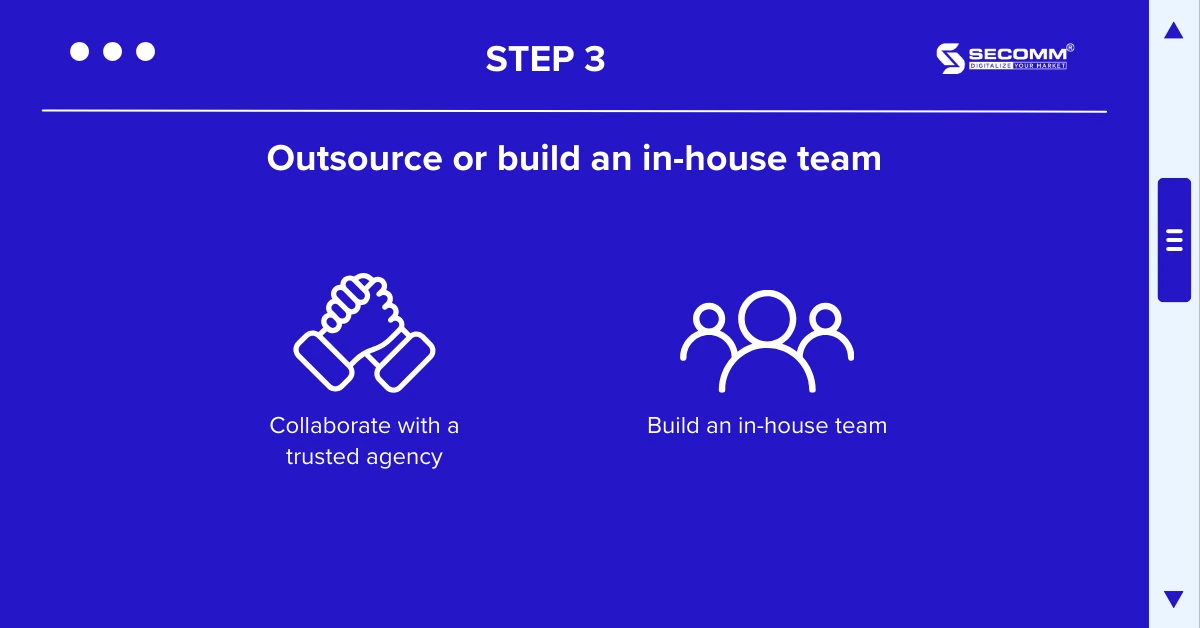
Opting for an in-house team entails investing time and budget into the recruitment and training of staff. However, it provides effective resource management, enabling businesses to adapt and develop the online marketplace system in alignment with their original vision.
Alternatively, when companies decide to seek external partners, they need to collaborate with various firms to identify the most reputable one. However, upon finding a partner with extensive practical experience in marketplaces across multiple platforms, businesses benefit from consultations and a multitude of solutions from diverse perspectives even before system development begins.
Moreover, these firms possess a wealth of experience in promptly addressing emerging issues during system development and operation. This not only ensures that the requirements are met as anticipated but also facilitates valuable knowledge and experience exchange among all parties involved.
Design UI/UX
The User Interface (UI) and User Experience (UX) are often considered two inseparable aspects in the process of designing the interface for an eCommerce marketplace.
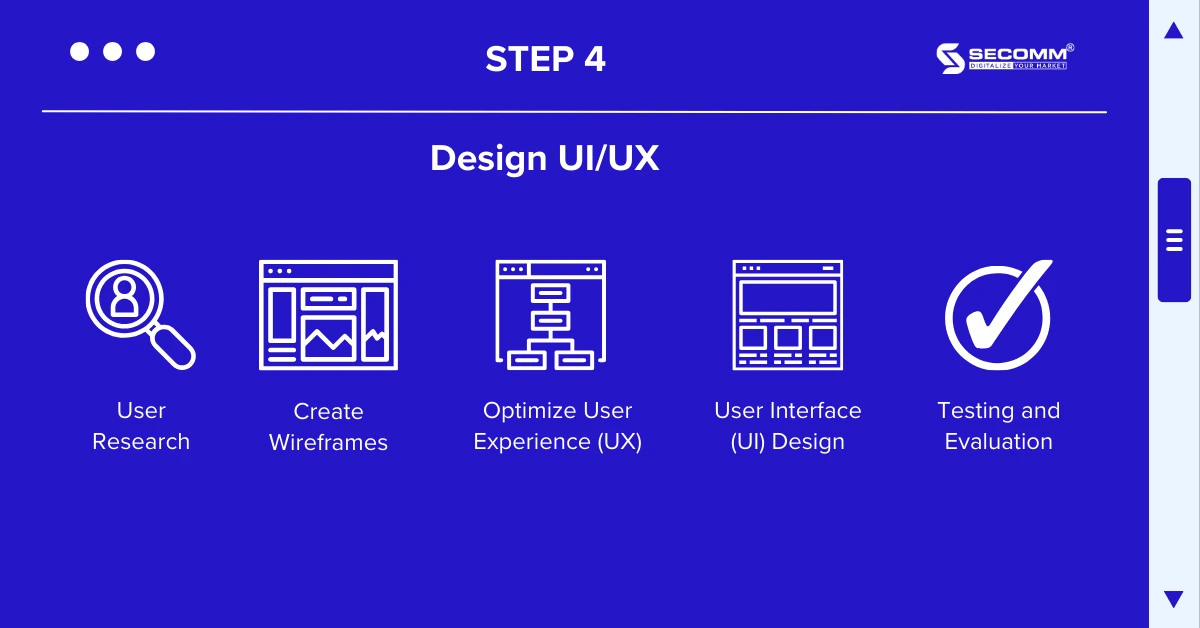
Here are the key steps in the UI/UX design process:
- User Research: Research and gain a deep understanding of the target user audience, including demographic information, behaviour, needs, and expectations. This helps the business identify important elements to focus on and design accordingly.
- Create Wireframes: Wireframes are simplified outlines of the website’s structure and layout, helping the business determine the placement of interface elements such as menus, buttons, images, and content containers. Wireframes provide an overview of the interface and assist in building the basic layout for the marketplace.
- Optimize User Experience (UX): Ensure the website is user-friendly, easy to navigate, and meets user needs, such as enhancing interactivity, mobile-friendliness, optimizing page loading speed, and more.
- User Interface (UI) Design: Create UI components such as buttons, menus, forms, images, and graphics that align with the brand. Make sure to use appropriate colors, fonts, and images to create a professional interface with a touch of the brand’s identity.
- Testing and Evaluation: After completing the UI/UX design, conduct testing with a user group or use testing tools to assess the effectiveness of the interface.
Design architecture and database
Starting from business requirements, the technical team will build the system architecture for the eCommerce marketplace based on the appropriate technology framework or platform. Various architectures can be used, such as three-tier architecture, microservices architecture, hybrid architecture, headless architecture, etc. Each type of architecture has its own advantages and limitations, so businesses need to carefully consider and work with experts on the team or partners to choose the most suitable system architecture for each stage.
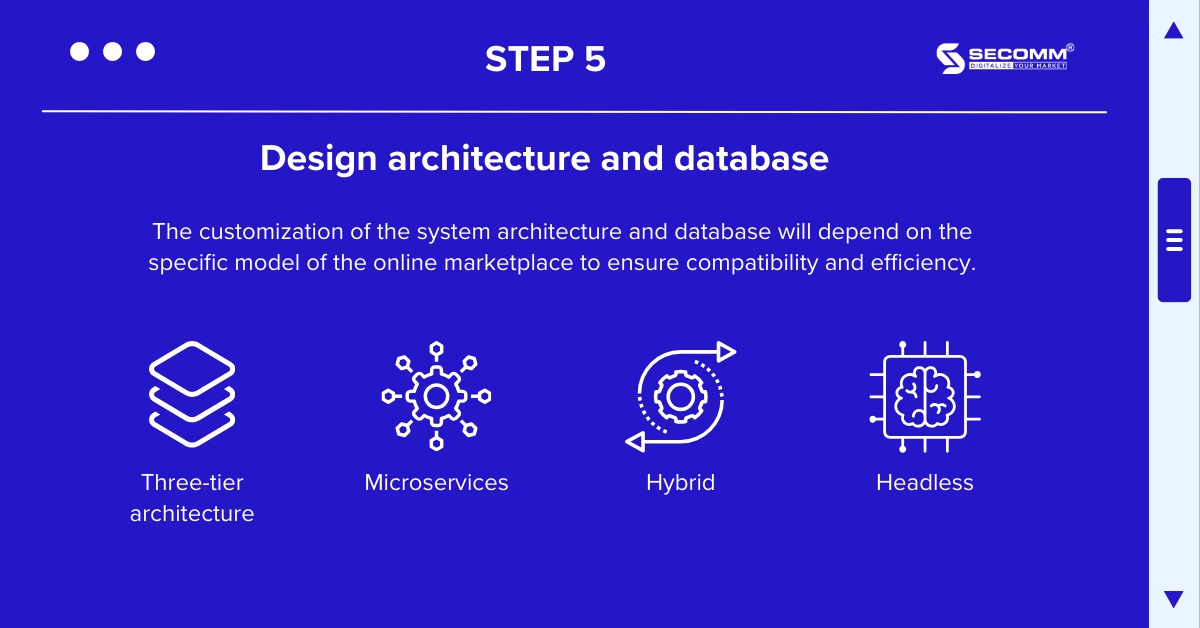
Another equally important next step is to establish security and data management. Businesses need to define security measures to protect user data, payment information, and other critical data. Ensure that data is encrypted and transmitted securely via an SSL connection. Implement data protection measures such as access control, user authentication, data encryption, and data integrity checks.
Depending on the operating model of the marketplace, system and database design may need to be customized to be suitable and effective.
Develop functional system
After completing the essential functional systems, businesses should continue to develop specific features for their online marketplace, such as:
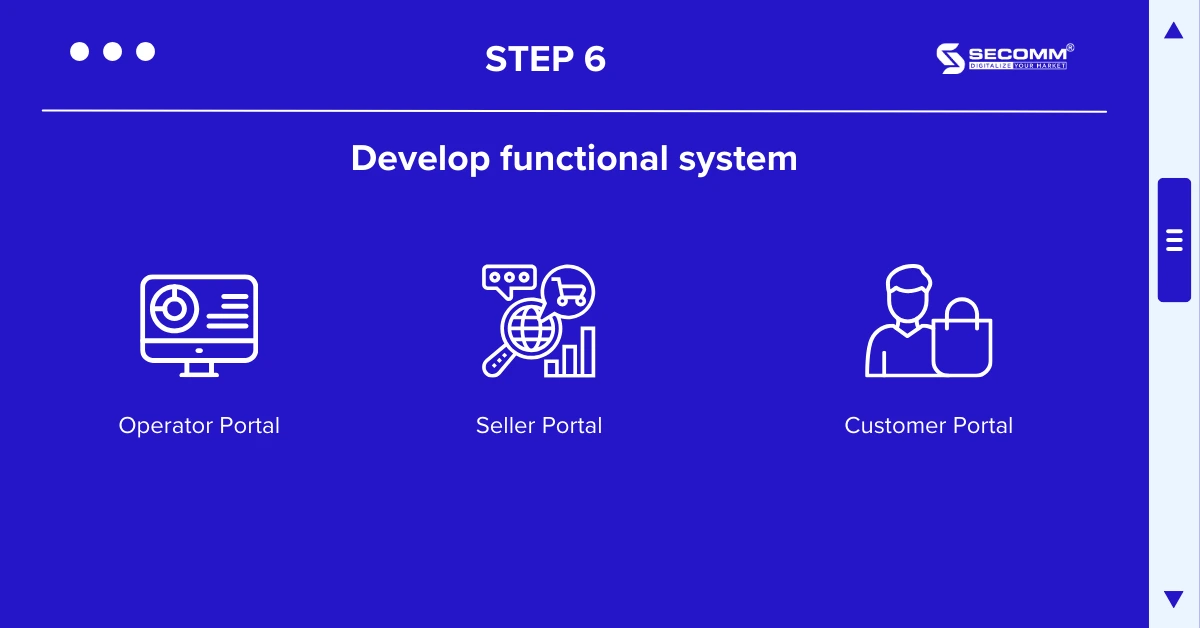
Operator Portal: Full control of platform information, including seller management, product categorization, customer segments, supply chain management, ad content control, and more.
- User Groups and Administrative Levels: Categorizing users into various groups and granting different permissions to different users.
- Supply Chain Management: Warehouse and inventory management, assisting sellers in order fulfilment by routing orders, and more.
- Marketing Tools: A range of tools support marketing strategies, including search advertising, live streaming, gamification, and more.
- User Experience Personalization: The ability to display personalized products such as favorites, similar products, past purchases, and facilitate order communication with sellers.
- Analysis and Reporting: Analyzing and measuring the performance of the online marketplace to develop future business strategies.
- Integration with Other Systems: Seamless integration with external systems.
Seller Portal: Sellers self-manage their presence in the marketplace, including product listings, orders, and activities, etc
- Category and Product Management: Add, edit, delete product categories and products within categories; manage product attributes and variations (color, size, etc.); manage inventory quantities.
- Content Management: Create and optimize content, including text, images, videos, banners, widgets, templates, branding, messaging, and more.
- Order Management: View order lists and their statuses. Track shipments and deliveries. Update order status (processing, delivered, canceled, etc.).
- Advertising and Promotions: Display advertisements, banners, promotions on the website. Manage discount codes, promotional programs, and more.
- Payment Integration and Transaction Processing: Integrate payment gateways for online payment processing. Confirm and track payment transactions.
Customer Portal: Allow users to perform and manage basic information such as phone numbers, email addresses, delivery addresses, adjust payment options, request quotes, manage shopping lists, check order status, etc.
- Account Registration and Management: Register new user accounts (buyers and sellers), log in, and manage personal information, delivery addresses, payment methods, etc.
- Product Search and Viewing: Search for products by keywords, categories, brands, etc. View detailed product information, including images, descriptions, prices, ratings, and more.
- Cart and Checkout: Add products to the cart; edit product quantities, remove products from the cart, calculate and display the total amount in the cart; select payment methods; enter payment information and delivery address; confirm and place orders.
- Reviews and Comments: Rate and write reviews about products; view reviews and comments from other users.
- Customer Support: Provide contact channels for customers to ask questions, request assistance; offer real-time support through direct chat, email, phone, and more.
Q/C Testing
Whether you’re building an in-house team or enlisting the services of external development agencies, the quality testing phase of a project holds immense significance. This critical stage is where businesses validate that the system functions as expected and complies with the initial requirements.
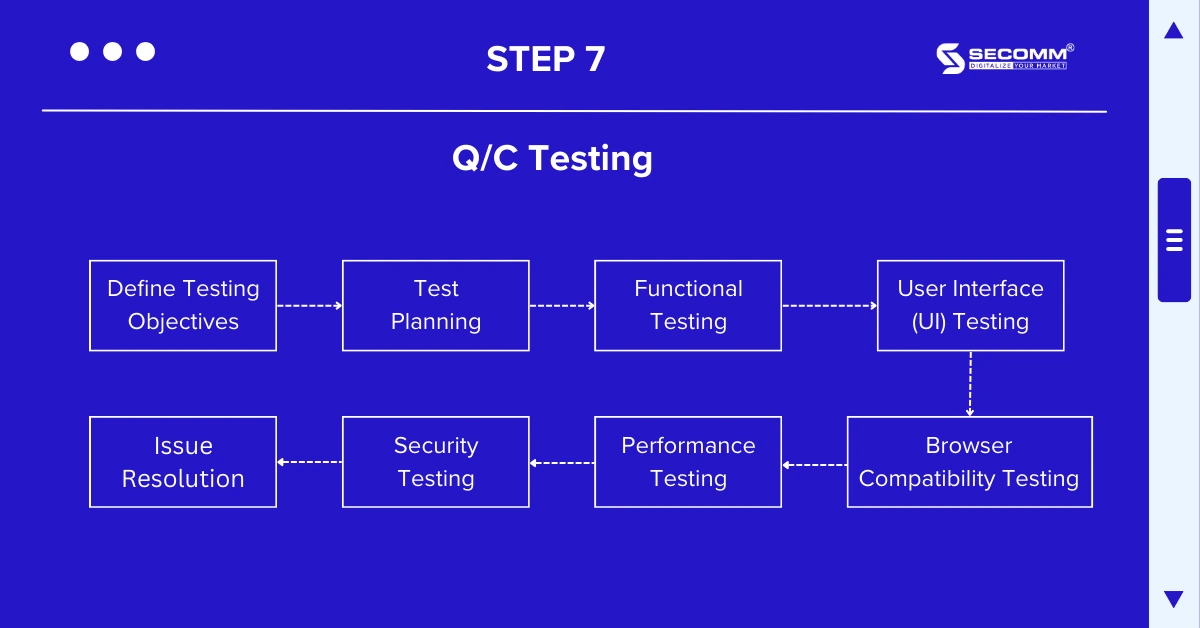
Step 1: Define Testing Objectives
Identify the objectives and scope of the testing process. Set specific criteria and requirements that the business wants to verify to ensure the platform operates accurately and meets the specified requirements.
Step 2: Test Planning
Determine a detailed test plan, including test cases, scenarios, and data. Identify the resources, timeline, and scope of the testing phases.
Step 3: Functional Testing
Verify all website functions to ensure they are working correctly as expected. If the business’s website supports multiple languages and regions, it should also verify compatibility and display of each feature in different geographical areas.
Step 4: User Interface (UI) Testing
Ensure the interface is designed beautifully and user-friendly. Evaluate information display, buttons, links, and user experience on various devices, including mobile and tablet.
Step 5: Browser Compatibility Testing
Test the website on popular browsers such as Google Chrome, Mozilla Firefox, Safari, and Microsoft Edge to ensure compatibility and correct display on all platforms.
Step 6: Performance Testing
Assess website performance, including page load speed, concurrent processing, and scalability. Ensure the website operates smoothly and can handle the expected traffic load.
Step 7: Security Testing
Examine the platform’s security by testing intrusion potential, data security, and user authentication. Verify security methods such as SSL, data encryption, and security certificates.
Step 8: Issue Resolution
Document and track any errors and issues that arise during testing. Identify the root causes, rectify the errors, and retest until the testing process is approved, and the entire system is ready for go-live and operation.
Golive
Go-live is the final stage in the process of starting an eCommerce marketplace when the system is officially launched and becomes operational.
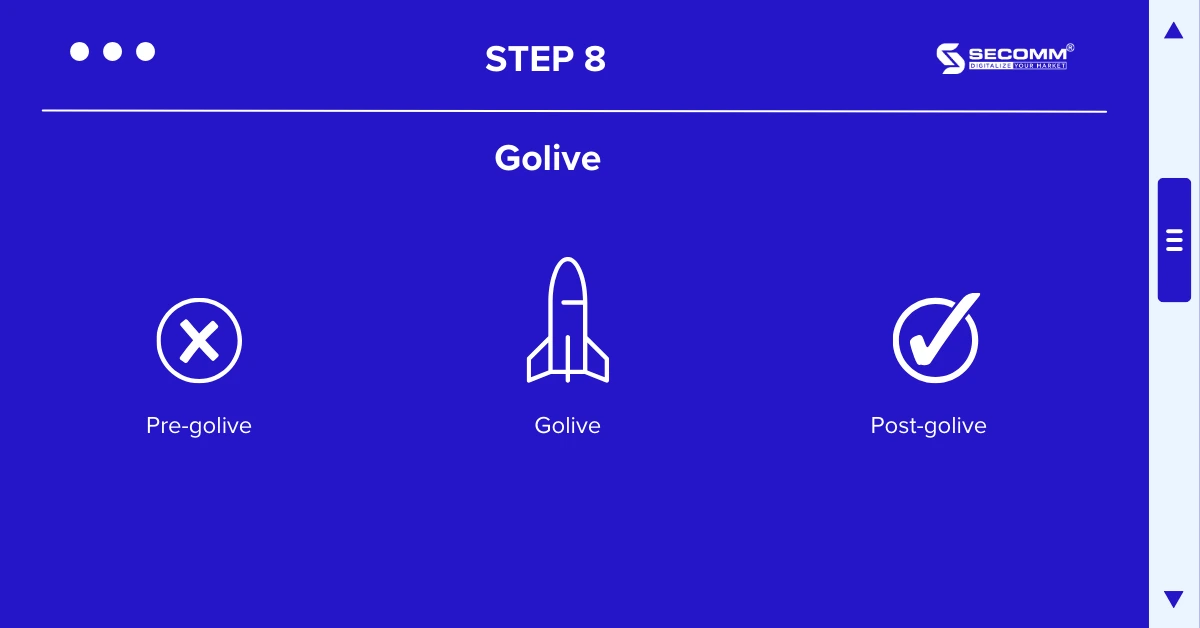
To ensure a successful go-live process, businesses should prepare a checklist known as the Go-live checklist. This is a list of tasks that the deployment team needs to perform to prepare the system for go-live. The checklist includes task items, responsible individuals, status, and how they affect the system.
Pre-golive
- Prepare the Production environment and configure the domain.
- Ensure that the entire source code of the go-live preparation system is the final version of the quality testing process.
- Data migration: Execute the data migration process from the old system to the new system using the established method. Then, verify the data after migration to ensure the integrity and accuracy of data in the new system.
- Content update: Review website content, including text, images, videos, and other materials. Ensure that the content is displayed accurately without spelling or formatting error
- Backup all website data to ensure safety and data recovery capabilities when needed
- Identify and prepare customer guide and support materials
Finally Golive
- Implement the transition process from the development environment to the actual production environment.
- Monitor website traffic and activities immediately after golive.
- Ensure system stability and performance throughout the go-live process.
Post-golive
- Monitor and analyze user feedback
- Address issues and problems that arise post-go-live
- Ensure the system’s stability and performance over an extended period after golive
- Ensure compatibility of integrations with external systems
- Train employees and managers to use and maintain the system effectively
Continuously update & develop features
Regularly updating the system is important for businesses to adapt to the ever-changing customer needs, improve customer experience, stay abreast of emerging technology trends, enhance competitiveness, and more. Moreover, continuous bug fixes and security patch updates enhance the brand’s credibility, safeguard users from internet threats, and so on.
Moreover, the development of new features empowers businesses to capitalize on market opportunities and scale their operations more professionally. For example, after a period of operation and accumulating a specific customer base, businesses can introduce features tailored to loyal customers.
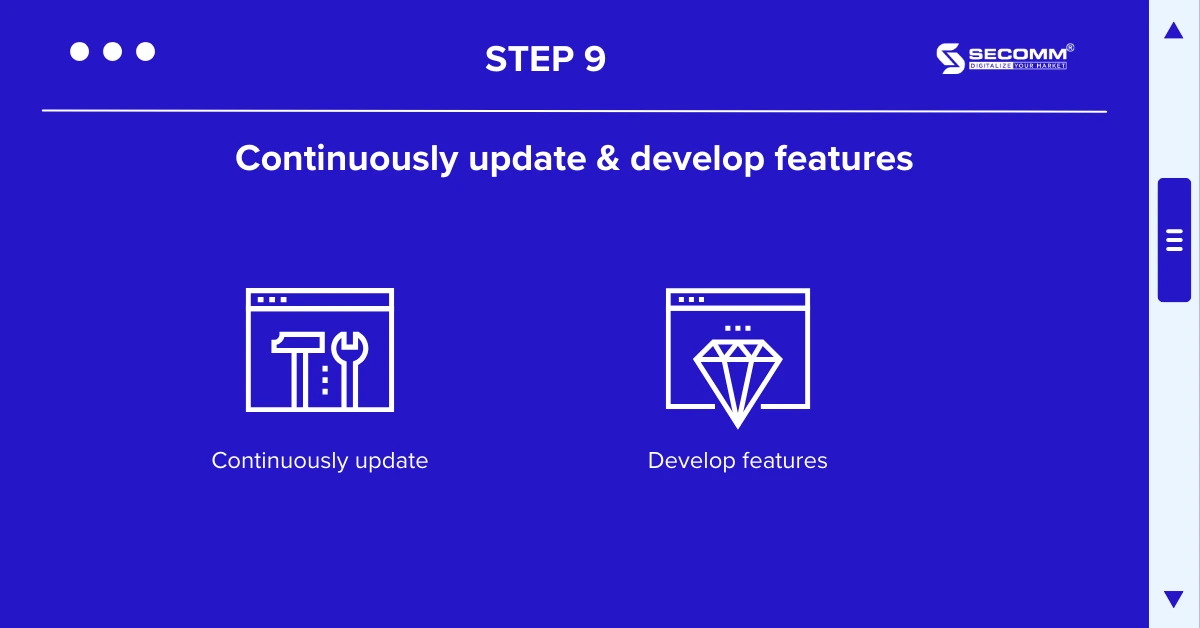
Running a thriving marketplace involves a multitude of factors, such as the business model, financial capabilities, and building strategic partnerships with diverse brands. However, a well-functioning eCommerce platform with high performance plays a vital role in the path to success. The journey of marketplace development is anything but straightforward. It requires substantial investments of time and resources for thorough research and the seamless alignment of solutions with each development phase.
Recognizing the challenges and hurdles that businesses face during the process of starting their eCommerce marketplace, feel free to contact or call SECOMM directly at (02871089908) for a free consultation.
 2
2

 13,383
13,383

 0
0

 1
1
